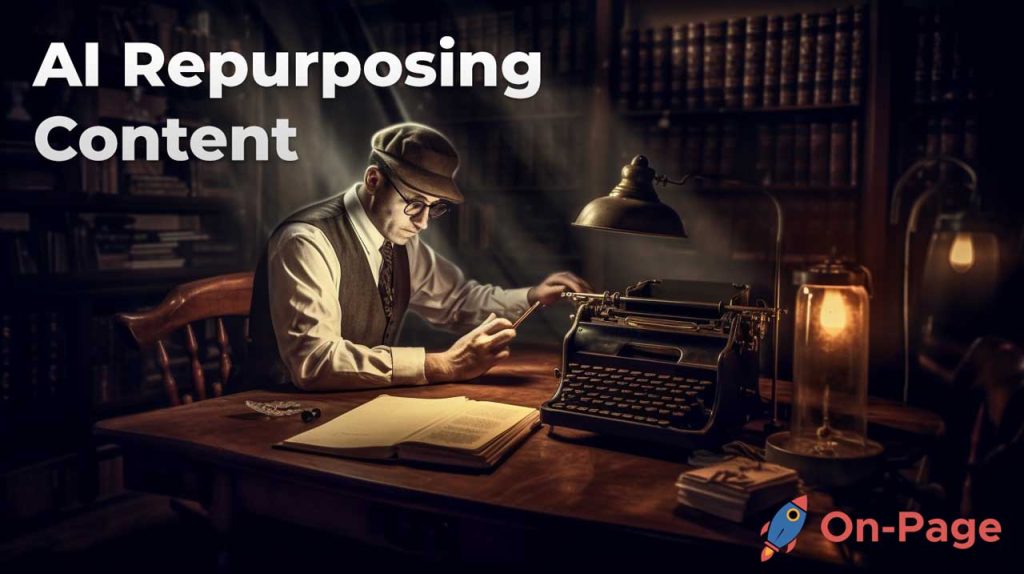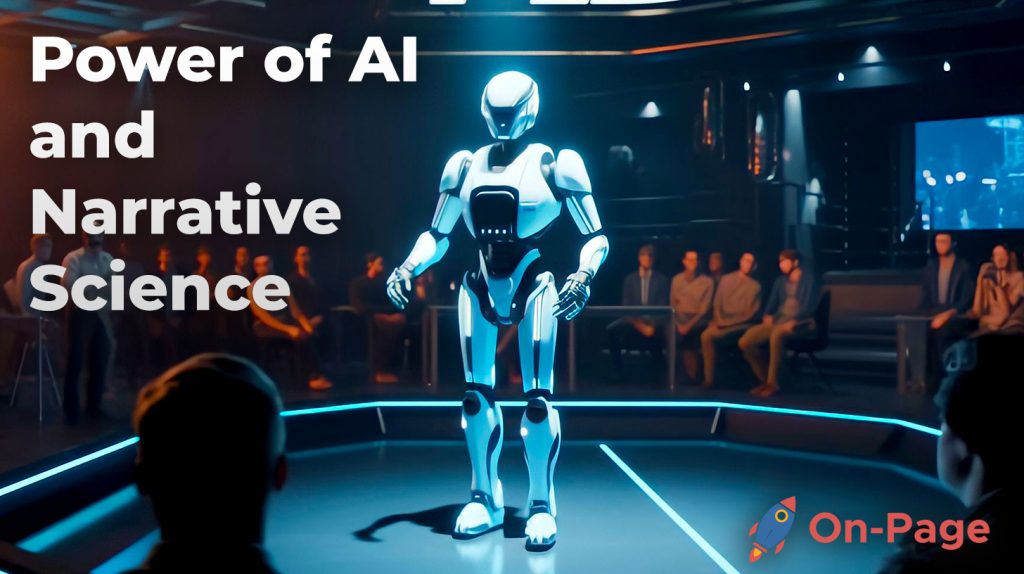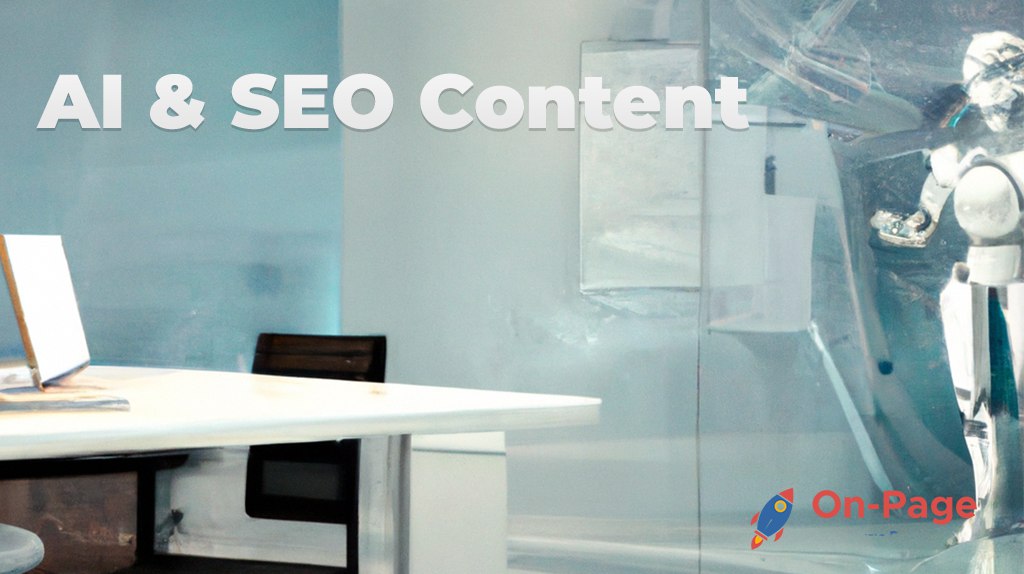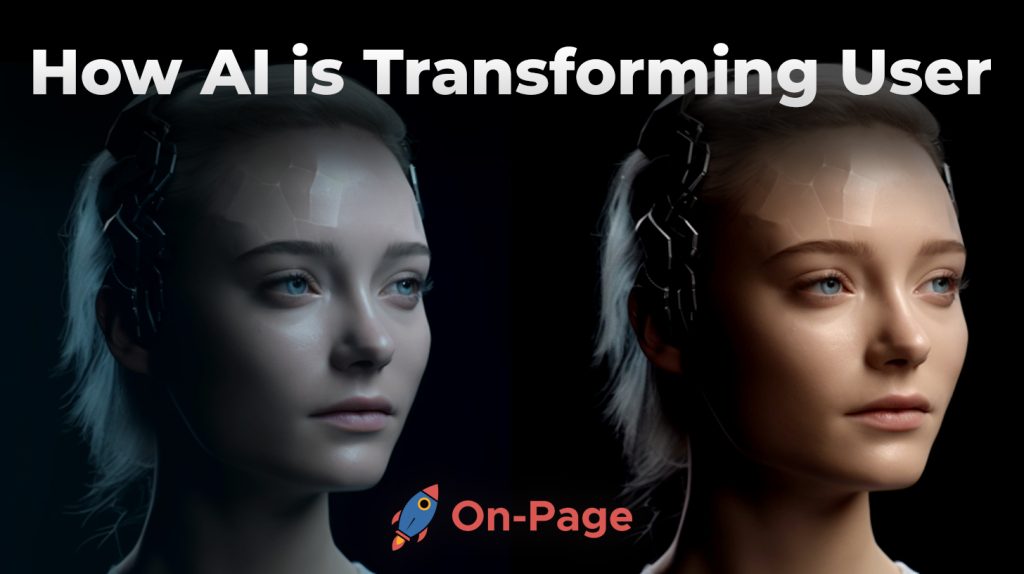Picture this: it’s 2023 and countless businesses have leveraged the unparalleled power of AI and text mining to unlock unimaginable success. This incredible fusion has catapulted them into a new era of effective decision-making, customer engagement, and optimized operations — all at the mere click of a button! How, you ask? Well, buckle up as we unveil the astounding potential of the best SEO optimization tool that’s transforming businesses across the globe. Don’t get left behind – dive in now to unleash this game-changing technology for your business!
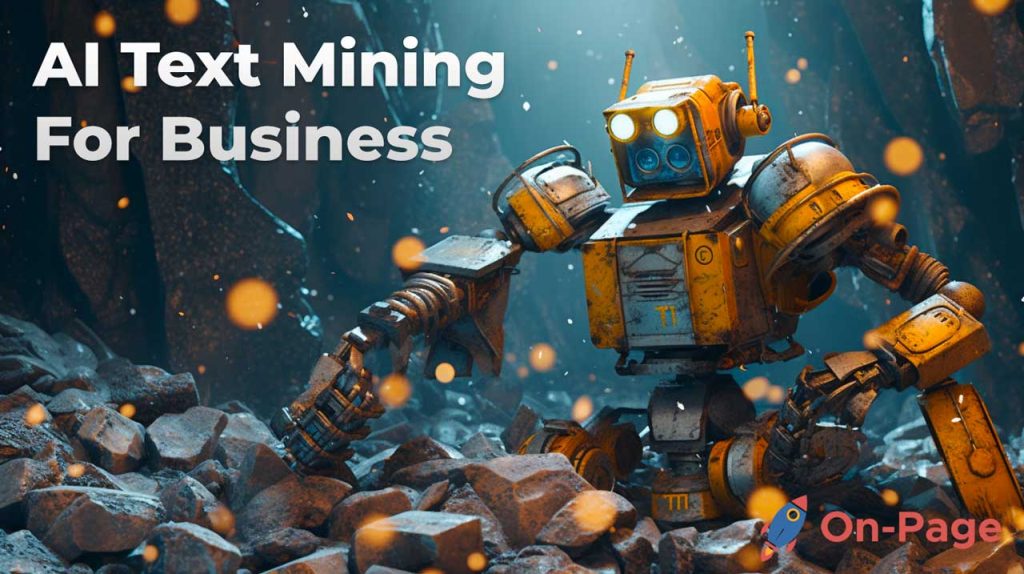
AI and text mining can help businesses extract meaning and insights from unstructured data such as social media posts, customer reviews, or support tickets. With the help of Natural Language Processing (NLP), machine learning algorithms, and other techniques, AI-powered text mining tools can analyze large volumes of textual data to identify patterns, trends, sentiment, and more. This information can then be used to drive better business decisions across various industries, including healthcare, finance, retail, and customer service.
AI and Text Mining Impact on Businesses
AI and text mining have transformed businesses across the globe in numerous ways. AI-powered text mining enables organizations to extract valuable insights from unstructured data, which can then be used for informed decision-making, refining their customer experience strategy, or for predictive analytics. Furthermore, with increasing amounts of data being generated daily, traditional approaches to data analysis such as manual processes or keyword searches are becoming obsolete in favor of sophisticated video and image processing techniques. In this section, we explore how AI and text mining technologies have impacted modern businesses.
One area where businesses benefited greatly from AI and text mining is in eCommerce. By leveraging powerful algorithms and deep learning techniques, online retailers were able to gain insights into consumer behavior patterns that would not otherwise be possible. Superficially analyzing past purchasing decisions of consumers helped companies to make more informed future sales strategies by introducing personalized products to the market. Personalized product recommendations have contributed to a 29% increase in add-to-cart rates and a 68% boost in sales revenue for businesses like Amazon rather than generic recommendations.
Another significant impact of AI and text mining is boosting customer satisfaction with improved chatbots and sentiment analysis tools. Chatbots use conversational interfaces supported by AI intelligence algorithms, offering customers a 24/7 service response system that can address their inquiries from anywhere worldwide quickly. The bots also offer enhanced customization capabilities such as user adaptive conversation flow which means they can adapt based on every unique user’s particular needs. Sentiment analysis tools enable business owners to obtain insights into their client’s thoughts about their products or services through social media posts or other unstructured feedback channels.
Nevertheless, there are concerns regarding the unethical use of Artificial Intelligence (AI), specifically when it comes to conversational interfaces like chatbots being programmed with racist remarks or stereotypes. This has been one of the most significant drawbacks to AI adoption. Furthermore, implementing text mining technologies into businesses may lead to ethical dilemmas regarding how and when data is collected, stored, and protected from outside threats. It is essential that businesses practice responsible data management as they apply text mining technology.
Now that we have seen the wide range of impact AI and text mining can have on businesses, let’s explore one of the significant improvements these technologies offer: improved decision-making.
- AI and text mining have revolutionized the way businesses operate and make decisions. By utilizing algorithms and deep learning techniques, online retailers can gain insights into consumer behavior patterns that would otherwise be difficult to obtain, leading to increased sales revenue and customer satisfaction. However, ethical concerns must be addressed, such as implementing responsible data management practices and preventing the use of chatbots programmed with racist remarks or stereotypes. Overall, AI and text mining have become essential technologies for modern businesses looking to stay competitive in today’s data-driven world.
Improved Decision Making
Improved decision-making sits at the heart of every business success story, whether it’s sales forecasting or product development. The use of AI has unlocked numerous potential avenues for informed decision-making, specifically through predictive analytics models and natural language processing (NLP) techniques.
Predictive analytics can be used to estimate customer needs and expectations while also identifying trends in large volumes of data. For example, an organization can implement image recognition software to improve its logistics operations by detecting defects in product shells with computer vision techniques. This allows them to elicit unstructured information insights which otherwise are time-consuming manually if even possible.
On the other hand, NLP allows companies such as law firms to analyze vast amounts of textual legal documents quickly. By training their machine learning solutions on several public court rulings or legislations, legal entities have could improve their efficiency by 30-40%. What’s more impressive is that these technologies continue evolving. Lately GPT-3 created by OpenAi has shown impressive ability to demonstrate writing behavior like human writers do with far less input from us customers.
However, while AI-powered decision-making might offer improved analysis accuracy compared to manual approaches, this approach cannot address various complexities and nuances present in the dynamic decisions made by humans. Additionally, automated decision-making does not provide satisfactory answers to how a particular conclusion was reached or why it came about in comparison to how a human might provide similar explanations.
As we continue to explore the potential of AI and text mining, in the next section we shift our focus to discuss industry application with healthcare and finance.
Enhanced Customer Experience
In the highly competitive business world, customer experience plays a crucial role in building strong customer relationships and driving revenue growth. Gone are the days when businesses could solely rely on their products to attract and retain customers. Today, businesses need to create a personalized experience for each customer, which includes understanding customer preferences, behavior patterns, and needs. AI and text mining have provided businesses with powerful tools to enhance the customer experience.
A good example of this is how online retailers such as Amazon use AI-powered recommendation engines to recommend personalized product offerings to customers based on their browsing and purchasing history. These sophisticated recommendation engines take into account various data points such as search queries, purchase history, user preferences, and other implicit signals such as clicks, scrolls, and time spent on pages to provide personalized recommendations.
Another example of how AI can enhance customer experience is through the use of conversational chatbots. Retail banks are using chatbots to engage with customers on various platforms such as websites, social media handles, messaging apps, and voice assistants. These chatbots use NLP technology to understand customer queries and provide immediate responses without any human intervention. This not only saves time but also improves the overall customer experience by providing instant solutions to common problems.
Some critics argue that chatbots can be impersonal and may not provide accurate responses in complex scenarios. To address this issue, some businesses are exploring the use of hybrid chatbots enabled with human agent collaboration. In this model, the AI-powered chatbot can handle routine queries while passing on more complex issues to human agents for resolution. This approach provides a balance between AI efficiency and human empathy.
Overall, leveraging AI and text mining technologies can help businesses personalize their offerings and create a more engaging customer experience.
Industry Applications of AI and Text Mining
AI and text mining offer vast opportunities for various industries to leverage customer insights, predict behavior, and drive business value. In this section, we will explore some of the key industry applications of AI and text mining.
In healthcare and life sciences, AI and text mining are driving massive innovation. With the increasing amount of healthcare data generated every year, traditional methods of manually sorting and analyzing data are not feasible. AI-powered text mining can help extract critical information from medical records such as diagnosis reports, radiological investigations, prescription history, symptoms, and other relevant patient information. This extracted data can then be analyzed to identify disease patterns, drug interactions, treatment outcomes, and early-stage diagnostics.
Financial institutions are also leveraging AI and text mining technologies to manage regulatory compliance challenges effectively. By using NLP for risk management processes, banks can analyze a diverse range of data sources in real-time to detect financial risks such as fraud, money laundering, or other non-compliant activities. This helps minimize potential losses while staying compliant with regulatory requirements.
The manufacturing sector is another area where AI and text mining can provide game-changing insights. By analyzing sensor data from production lines using machine learning models, manufacturers can predict equipment failures and proactively schedule maintenance activities. This approach minimizes downtime costs while improving overall operational efficiency.
Across different industries, businesses that embrace AI-powered text mining technologies will gain significant competitive advantages by uncovering valuable insights hidden in their data.
Healthcare and Life Sciences
The healthcare industry generates more data than almost any other sector. Given the complexity of medical research, data-driven insights can help make significant breakthroughs in drug discovery, patient care, and clinical operations. AI and text mining technologies have tremendous potential to transform various aspects of healthcare.
One example is cancer research. Researchers can use natural language processing (NLP) algorithms to identify trends across large volumes of electronic health records (EHRs). By using NLP’s ability to understand complex data, researchers can analyze patients’ medical histories to isolate common characteristics and potentially identify mutations that cause certain types of cancer.
Furthermore, AI could play a pivotal role in reducing diagnostic errors through automatic image recognition. Machine learning models can learn from labelled images to detect abnormalities and patterns that may go unnoticed by radiologists. Through the continuous feedback loop, AI systems fine-tune their predictions, resulting in better accuracy rates over time.
Another example is personalized medicine. AI-powered recommendation engines can analyze various factors such as patient history, DNA sequencing results, and lab test reports to predict possible health outcomes and suggest personalized treatments. This process not only ensures better treatment but also saves lives as it offers a timely response based on an individual’s needs.
However, some experts argue that while there is considerable potential for AI in healthcare, the technology must be introduced with great care – especially considering issues around patient privacy and confidentiality. It is essential to have medical personnel involved in the decision-making process rather than making fully autonomous decisions based solely on machine learning algorithms.
- According to a study conducted by Allied Market Research, the global text analytics market, which includes AI and text mining applications, is expected to reach $10.2 billion by 2023, growing at a CAGR of 17.5% during the forecast period.
- In an IDG survey conducted in 2020, around 75% of companies reported using AI technologies like natural language processing (NLP) for analyzing data in various aspects of their businesses.
- A research paper published in the Journal of Big Data in 2019 found that integrating machine learning algorithms with text mining techniques resulted in an average accuracy improvement of 15% compared to using traditional methods for sentiment analysis.
Finance and Risk Management
Market players are under pressure to stay ahead of their peers on several fronts: increasing profitability, reducing operational costs while meeting regulatory obligations amongst others. With financial professionals’ recent adoption of big data technology solutions driven by AI and text mining algorithms, there is an opportunity for significant breakthroughs in financial services.
One instance where AI could create vast improvements is fraud detection. Fraudulent transactions often occur with a common pattern, which can lead to its detection quickly. AI-powered systems can learn and identify the characteristics of fraud over time from large datasets available with financial institutions.
Additionally, unstructured data from different sources like news articles, social media, and other websites can impact a company’s stock performance or risk profile. Sentiment analysis and text mining algorithms can read through these unstructured data sources, provide valuable insights into market sentiment and predict future movements.
Risk management is critical to financial institutions that have to deal with various types of risks such as compliance risk, operational risk, liquidity risk etc. By gathering various traditional and non-traditional data types (such as weather patterns) aided with AI-driven analytics techniques like machine learning models and predictive analytics they can mitigate risks better.
However, one concern around AI’s adoption in finance is centered around the fact that the key players involved in decision-making must understand the risks associated with this technology. Additionally, sometimes relying on algorithmic results alone could cause flawed decisions with broader impacts on overall economic health.
Overcoming Challenges in AI Adoption
Artificial intelligence (AI) adoption is a buzzword in the business world today. Companies across industries are realizing its potential to revolutionize their operations and decision-making processes, leading to improved outcomes and increased profits. However, despite its enormous potential, many organizations are still struggling to adopt AI. In this section, we will explore some common challenges in AI adoption and strategies for overcoming them.
One of the most significant challenges businesses face when adopting AI is selecting the right technology. With so many vendors offering AI solutions, it’s easy to get overwhelmed with the options available. Additionally, many companies are hesitant to invest in an untested technology that may or may not deliver the desired results. This hesitancy can be compounded by budget constraints and uncertain ROI projections.
To overcome this challenge, businesses need to identify their specific needs and workflows that would benefit from AI adoption. Then they must research various vendors and their respective offerings to find a solution that best meets their requirements. Companies shouldn’t be afraid to pilot-test several actors before making a final decision on which one to use for their operations.
Another significant challenge in AI adoption is data privacy and ethical considerations. Businesses often find themselves dealing with sensitive customer data that must be processed using AI algorithms. This can create concerns regarding data security breaches, biased algorithms, and privacy violations.
To combat these issues, organizations should implement strong data protection policies supported by technologies such as cryptography techniques like homomorphic encryption and ensuring algorithms comply with ethical guidelines for ethical data use purposes.
Now let’s explore another challenge in AI adoption that is inherent in leveraging vast swaths of data – Data Quality and integration.
Data Quality and Integration
When implementing artificial intelligence (AI) projects, organizations frequently face problems related to poor quality data. Data quality is critical to successful AI program implementation because the performance of an algorithm depends entirely on accurate data input. In this section, we will address how businesses can achieve data quality and integration.
Some of these problems include a lack of trust in the accuracy or completeness of the data, poorly defined data governance policies which hinder data quality monitoring, and management practices that are not aligned with industry best practices.
One strategy to mitigate low-quality data is to establish best practices around data governance and management. Organizations can rely on experts from various departments such as legal, IT, compliance, and business leaders for input into developing policies that ensure high-quality data usage consistently.
Another challenge related to integrating big data is the difficulty in working with different types of data. For instance, when combining unstructured with structured data, it’s important to align them correctly and make sure they’re consolidated in a meaningful way.
To tackle this issue, companies can take advantage of technologies such as entity resolution where multiple clusters of disparate information across databases can be automatically connected by creating unique identities in respect to available domains.
Future Outlook for AI and Text Mining
Artificial intelligence and text mining technology are growing at an unprecedented rate, with new developments and advancements emerging each year. As we look towards the future of these fields, there are several key trends and potential applications that businesses should be aware of.
One major area of growth for AI and text mining is in the realm of natural language processing (NLP). NLP technology looks to enhance our ability to interact with machines in a more conversational manner. This will enable us to conduct more advanced searches and attain more useful results. For example, NLP will help companies deliver an enhanced customer experience through chatbots that can understand customer inquiries, provide tailored responses, and address their concerns quickly and efficiently.
Another trend in the future of AI and text mining is the increased use of blockchain technology. Companies like SingularityNET are using blockchain to create decentralized marketplaces where businesses can access AI services from a global network of providers. This shift toward decentralization means that companies can seek out specialized expertise and capabilities without having to invest heavily in building in-house teams.
Like how Airbnb revolutionized the hospitality industry by allowing travelers to find affordable rooms without having to go through traditional hotel chains, decentralization is democratizing access to AI expertise.
Finally, machine learning continues to play an important role in the future development of AI and text mining. The continued growth of big data means that ongoing improvements in machine learning algorithms will allow us to extract even more relevant insights from vast datasets. With this increased accuracy comes improved decision-making across industries – allowing business leaders to make informed decisions about everything from supply chain management to product development.
For instance, companies like IBM are partnering with universities such as MIT or other private centers in order to develop better algorithms involved in machine learning. These algorithms help bring insights from large data sources together so that they can be used for prediction or decision making. With better algorithms, we have the potential to tap into vast amounts of data and make more accurate predictions regarding consumer behavior, market trends, and company performance.
Evolving Technological Landscape
As technological advancements continue to shape the future of AI and text mining, businesses must stay up-to-date with the latest trends and state-of-the-art tools. One significant area of growth is in the use of cloud computing platforms for AI development.
Cloud-based solutions offer several benefits over traditional on-premise tools. Cloud solutions provide faster innovation cycles because they are updated regularly, which means that businesses always have access to the latest AI capabilities without having to initiate a time-consuming update process. These platforms also alleviate the need for businesses to invest heavily in infrastructure since their development environment is hosted remotely. This allows smaller startups and businesses to access advanced AI technology without having to build it themselves from scratch.
For example, Amazon Web Services (AWS) offers various services related to AI and ML, including image recognition, speech analytics, text-to-speech conversion, and sentiment analysis. All these services are available through AWS’s cloud platform so users only pay for what they use without having to worry about infrastructure costs.
Another trend driving the evolution of AI technology is the rise of edge computing. Edge computing involves processing data closer to its source – whether that be at a remote plant or warehouse rather than in a central data center – in order to minimize latency and improve real-time decision-making.
However, while edge computing can improve certain use cases for AI such as autonomous vehicles or factory robots where split-second decisions are needed; it comes with its own set of limitations. Namely, the processing capacity of edge devices is still limited compared with centralized processing centers. An option would be combining both solutions so that processed data could be moved periodically from edge devices to centralized data centers where more complex algorithms could be applied.
Potential Business Opportunities
AI and text mining have opened new avenues of opportunities for businesses across various industries. From improving decision making to enhancing customer experience, the potential of AI and text mining is immense. Moreover, these technologies can be used to create tangible business value and drive growth in a competitive marketplace.
One potential business opportunity is the use of AI-powered chatbots to improve customer service. Chatbots can assist customers in real-time by answering their queries, providing necessary information or even guiding them through the buying process. This not only improves customer satisfaction but also helps businesses save time and resources.
Another promising application of AI and text mining is in the field of marketing and advertising. By analyzing customer data and identifying patterns, businesses can create highly targeted advertising campaigns that are tailored to individual preferences and needs. This results in better engagement rates and higher conversion rates, thus increasing revenue for the business.
Furthermore, AI-powered tools can improve operational efficiency by automating repetitive tasks such as data entry, report generation, and analysis. This not only reduces errors but also frees up valuable resources that can be redirected towards more strategic tasks.
For instance, On-Page.ai’s advanced SEO tool powered by AI enables users to optimize their web pages for better web rankings. The tool scans websites just like Google, identifies main content, sidebars, footers, headers, and advertisements to provide accurate recommendations that tell users the most important words to add to their page to rank.
In conclusion, the potential business opportunities presented by AI and text mining are vast. With these technologies, businesses have a chance to optimize their operations, create value for customers and differentiate themselves from competitors. Adopting AI-powered tools such as On-Page.ai’s advanced SEO tool powered by AI can help businesses stay ahead of the competition in a fast-moving digital world.
At On-Page.ai, we are committed to helping businesses harness the power of AI and text mining. Our advanced SEO tool and Stealth Writer/ReWriter can help businesses improve their web rankings, create content that is optimized
Responses to Common Questions
Can AI and text mining help with language translation and understanding?
Absolutely! AI and text mining have revolutionized the field of language translation and understanding. With the help of AI-powered language translation tools, businesses can now easily communicate with their global customers in their native language. These tools make it possible to translate massive amounts of text quickly and accurately, saving businesses time and money.
According to a report by MarketsandMarkets, the global AI-powered language translation market is expected to grow from $1.5 billion in 2018 to $9.7 billion by 2023. This growth highlights the increasing demand for AI-powered language translation tools.
In addition, text mining – another application of AI – can also assist in understanding the nuances of languages. By analyzing large volumes of text data, businesses can identify patterns and trends in consumer behavior, sentiment towards products or services, and even predict future preferences.
Overall, AI and text mining offer immense potential for businesses looking to improve their communication with global audiences. These tools not only save time and resources, but they also enhance accuracy and effectiveness in communication – which can ultimately lead to increased customer satisfaction and revenue for businesses.
How is AI being used in text mining?
AI is being extensively used in text mining to extract insights and valuable information from vast amounts of unstructured data. Machine learning algorithms, natural language processing (NLP), and deep learning are some of the techniques that are being used to analyze and categorize text data.
One of the most common applications of AI in text mining is sentiment analysis. It helps businesses understand how their customers feel about their products or services by analyzing social media posts, customer reviews, and feedback. According to a study by ResearchAndMarkets, the global sentiment analysis market size is expected to reach $11.15 billion by 2026, growing at a compound annual growth rate (CAGR) of 20.3% from 2021 to 2026.
Another application of AI in text mining is chatbots or virtual assistants, which use NLP to understand customer queries and provide relevant responses. According to a study by Juniper Research, chatbots will help businesses save over $8 billion per year by 2022.
AI-powered content generation is another area where text mining is being used extensively. By analyzing existing content, machine learning algorithms can create new content that matches the style and tone of the original content. This can help businesses save time and resources on content creation while still maintaining high quality.
In summary, AI is transforming the way businesses analyze and derive insights from text data. With its ability to analyze huge volumes of unstructured data quickly and accurately, AI-powered text mining is becoming an essential tool for businesses across industries.
What advancements are being made in AI and text mining technology?
The advancements being made in AI and text mining technology are truly remarkable. In the past few years, there has been a significant increase in computing power and data storage capacity which has enabled researchers to develop more sophisticated algorithms and models. As a result, businesses are now able to unlock the power of large amounts of unstructured data like never before.
One such advancement is the development of deep learning neural networks, which are capable of processing natural language much more accurately than ever before. For example, Google’s BERT algorithm can now understand the nuances of conversational language with 90% accuracy, making it one of the most powerful natural language processors in history.
Another major advancement is in sentiment analysis – a technique used to gauge public opinion on a given topic or product. With advances in machine learning, sentiment analysis can now help businesses understand how their customers feel about them in real time. This allows them to tailor their products and marketing messages accordingly.
According to a recent study by IBM, over 80% of all enterprise data is currently unstructured – but using AI and text mining tools, businesses can extract valuable insights from this vast amount of data that would otherwise go unnoticed. Furthermore, a report by MarketsandMarkets predicts that the global text analytics market will be worth $8.79 billion by 2022.
In conclusion, AI and text mining technology is advancing at a rapid pace, with developments in deep learning neural networks and sentiment analysis leading the way. With such powerful tools at their disposal, businesses are able to gain valuable insights from unstructured data and harness this knowledge to drive growth and innovation.
What ethical concerns come with using AI in text mining?
As AI and text mining technologies continue to evolve, so do the accompanying ethical concerns. One major concern is the potential for biased results due to built-in biases in the algorithms themselves or in the data used to train them.
For example, a study by Stanford researchers found that an algorithm used for predicting healthcare costs inadvertently discriminated against black patients, resulting in lower-quality care and higher costs (Obermeyer et al., 2019). This highlights the danger of relying on AI without considering potential biases.
Another ethical concern is privacy. With text mining technologies, massive amounts of personal data can be gathered and analyzed without permission or knowledge of individuals. This raises concerns about surveillance, autonomy, and discrimination.
Lastly, transparency and accountability are essential when it comes to using AI for text mining. There needs to be clear explanations of how algorithms work and how they arrive at certain conclusions. Additionally, there should be accountability for any harmful consequences that result from their use.
Overall, while the potential benefits of AI in text mining are significant, there must be a balance between technological advancement and ethical considerations. As businesses seek to harness the power of AI, it is crucial that they also consider its potential impact on society as a whole.
Reference:
Obermeyer, Z., Powers, B., Vogeli, C., & Mullainathan, S. (2019). Dissecting racial bias in an algorithm used to manage the health of populations. Science, 366(6464), 447-453.
What industries are benefiting the most from AI and text mining?
The potential of AI and text mining is vast, and multiple industries are already reaping the benefits. According to a report by Grand View Research, the global market for AI is expected to reach $390.9 billion by 2025 with the highest CAGR anticipated in the healthcare industry. The following industries are utilizing AI and text mining to enhance their business operations:
1) Healthcare: AI algorithms can analyze vast amounts of medical data to provide accurate diagnoses, identify potential health risks, and improve patient outcomes. A study published in Nature Medicine showed that AI-based prediction models could accurately diagnose various diseases, including skin cancer, breast cancer, and Alzheimer’s.
2) Retail: Text mining enables retailers to gain insights into customer behavior by analyzing social media interactions, review sites, and customer feedback. Data from McKinsey suggests that companies using AI for personalization in e-commerce achieve revenue growth rates of 6-10%.
3) Financial Services: Banks and financial institutions are using AI-powered chatbots and virtual assistants to offer personalized financial services to customers at scale. PwC predicts that by 2023, investment banks could automate up to 90% of their back-office tasks using AI.
4) Transportation: With the help of AI and text mining, transportation companies can optimize route planning, scheduling, maintenance management, and improve logistics efficiency. A report by MarketsandMarkets suggests that the global smart transportation market size is expected to reach USD 257.30 billion by 2025.
Overall, the application of AI and text mining across different sectors has demonstrated significant improvements in efficiency and cost savings that businesses can’t afford to ignore.

